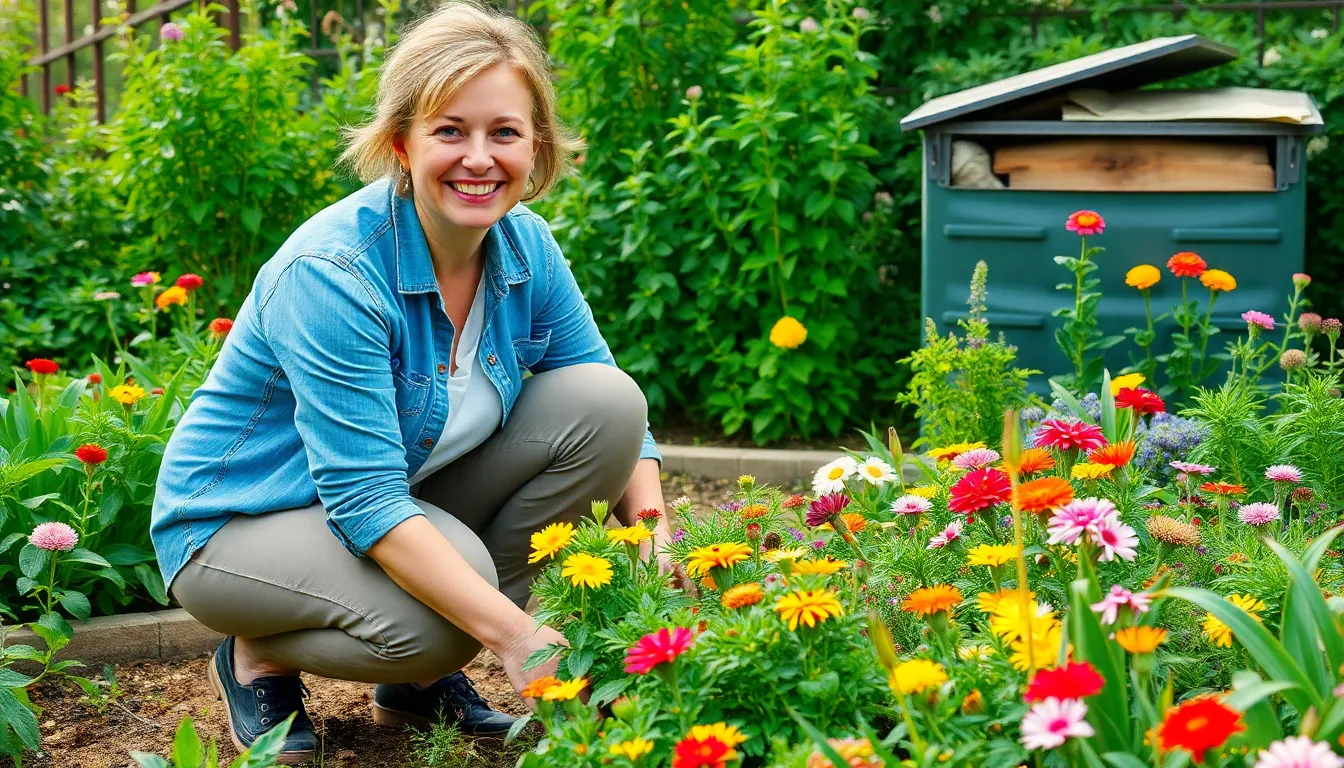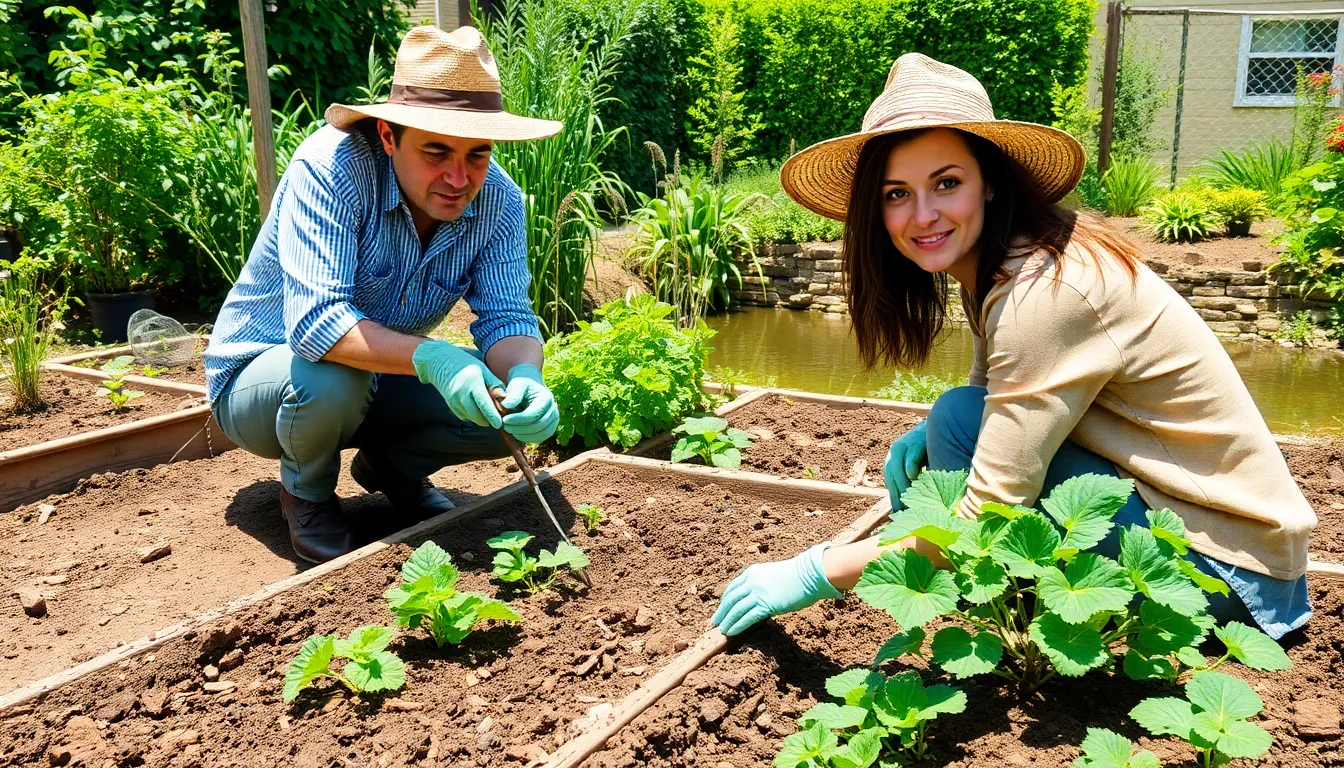Physical Address
304 North Cardinal St.
Dorchester Center, MA 02124
Physical Address
304 North Cardinal St.
Dorchester Center, MA 02124

Imagine stepping into your backyard and being greeted by a vibrant oasis of life, where every plant plays its part in a sustainable symphony. Sustainable gardening isn’t just a trend; it’s a lifestyle that even the busiest novice can embrace. With a little know-how and a sprinkle of patience, anyone can transform their patch of earth into an eco-friendly haven.
Sustainable gardening encompasses practices that promote environmental health and biodiversity. This approach focuses on resource conservation, waste reduction, and ecosystem enhancement while providing aesthetic and functional benefits.
Sustainable gardening involves cultivating plants while minimizing negative environmental impacts. Key principles include using organic methods, maximizing biodiversity, and conserving water. Emphasizing native plants creates habitats for local wildlife. Implementing composting reduces waste and enriches soil. Additionally, rotating crops maintains soil health and deters pests. Adopting these practices fosters a resilient ecosystem.
Gardening sustainably offers numerous advantages for the environment and individual well-being. Reduced reliance on chemical fertilizers and pesticides leads to healthier soil and water. Sustainable gardens contribute significantly to local biodiversity by attracting pollinators and beneficial insects. They can decrease greenhouse gas emissions through carbon sequestration and reduced transportation of food. Moreover, these gardens often require less maintenance, saving time and resources. A sustainable garden can provide an abundant source of fresh produce, promoting healthier eating habits and a connection to nature.

Starting a sustainable garden requires thoughtful planning and a few essential steps. Understanding your environment and resources can lead to a thriving garden that benefits both plants and wildlife.
Select a spot that receives adequate sunlight for the chosen plants. Consider positioning your garden near a water source for efficient irrigation. Observe how the sun moves across your space during the day to maximize light exposure. Take note of existing trees or buildings that might create shade and affect growth. Evaluate the natural drainage patterns to prevent waterlogging. Prioritize accessibility to ensure easy maintenance, and consider proximity to your home for convenience.
Assessing soil health forms the foundation of a sustainable garden. Test the soil for pH and nutrient levels to determine its composition. Incorporate organic matter like compost to enrich the soil and improve structure. Ensure adequate aeration for root development by avoiding heavy machinery on the garden beds. Monitor moisture levels to maintain consistency without overwatering. Promote earthworms and beneficial microbes, which enhance soil biodiversity, fostering healthy plant growth. Regularly rotate crops to prevent nutrient depletion and pests, keeping the soil vibrant and productive.
Selecting the right plants is essential for a sustainable garden. Beginners should focus on incorporating native plants and considering companion planting techniques.
Native plants play a significant role in sustainable gardening. They require less water and maintenance compared to non-native varieties. Local wildlife thrives on native plants, providing essential habitats for pollinators and other beneficial insects. Flowers like black-eyed Susans and coneflowers attract butterflies, while native grasses offer shelter. They contribute to soil health and reduce pest issues naturally. Gardens featuring native species require fewer chemical inputs, promoting a healthier ecosystem.
Companion planting enhances garden productivity and promotes sustainability. Certain plant combinations improve growth through mutual benefits. For instance, tomatoes grow well with basil, as basil repels pests and enhances flavor. Corn, beans, and squash—known as the Three Sisters—support each other’s growth while maximizing space. Understanding companion planting can reduce pest-related challenges, leading to healthier plants. Utilizing this technique not only boosts yields but also promotes biodiversity in the garden.
Implementing sustainable gardening techniques starts with understanding various methods for resource conservation and pest management. These practices create an ecosystem that supports plant health and local wildlife.
Effective water conservation enhances garden sustainability. Utilizing drip irrigation reduces water waste by directing moisture precisely to plant roots. Implementing rain barrels captures and stores rainwater, allowing gardens to thrive even during dry periods. Choosing drought-resistant plants further decreases dependence on irrigation, thus conserving water. Mulching around plants helps retain moisture in the soil, reducing evaporation. These strategies collectively promote efficient water use while supporting stronger, healthier plants.
Organic pest control proves essential in sustainable gardening. Encouraging beneficial insects, such as ladybugs and lacewings, provides natural pest management without chemicals. Introducing homemade remedies, like neem oil or soap sprays, targets specific pests while being safe for plants and beneficial insects. Crop rotation disrupts pest life cycles, minimizing infestations. Planting herbs and flowers that repel pests creates a natural barrier, providing additional protection to vegetable beds. Combining these methods fosters a balanced ecosystem that supports plant health while reducing reliance on synthetic pesticides.
Maintaining a sustainable garden involves ongoing attention to its diverse needs. Regular care ensures the ecosystem thrives and continues to provide benefits.
Monitor plants throughout the seasons. In spring, focus on planting and nurturing new growth. Summer demands extra watering and mulching to conserve moisture. Fall presents an opportunity for harvesting and preparing for winter; removing debris helps prevent pests. Winter care involves protecting plants from harsh conditions; consider using frost cloths or straw mulch. Adapting care practices per season enhances the health of the garden and supports biodiversity.
Treat garden waste as a resource. Composting organic materials such as vegetable scraps and yard waste enriches soil health. Utilizing a compost bin or pile encourages decomposition and transforms waste into nutrient-rich compost. Mulch can be created from shredded leaves or grass clippings, helping retain moisture and suppress weeds. Ultimately, adopting responsible waste management practices reduces landfill waste while enriching the garden, promoting a flourishing ecosystem.
Embracing sustainable gardening opens up a world of possibilities for beginners. It’s not just about growing plants; it’s about nurturing the environment and creating a thriving ecosystem. By adopting simple practices like composting and selecting native plants, anyone can make a positive impact.
The journey towards a sustainable garden is rewarding and fulfilling. With each step taken towards eco-friendly practices, individuals contribute to a healthier planet while enjoying the beauty of nature. As they cultivate their gardens, they’ll discover the joy of connecting with the earth and the satisfaction of growing their own food. Sustainable gardening is more than a hobby; it’s a lifestyle choice that benefits both the gardener and the environment.